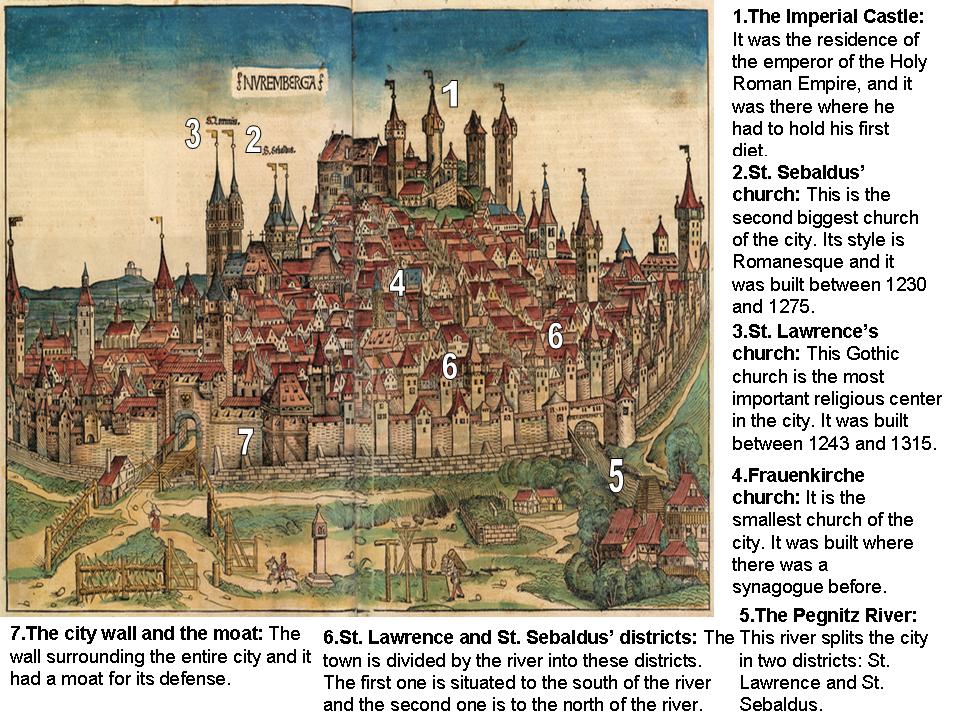NUREMBERG (Wolgemut & Pleydenwurff, 1493)
This work of art is a wood engraving belonging to The Chronicles of Nuremberg. This is a book that tells about the history of humanity based on the Holy Bible. It also has several handmade pictures of the cities of the age. It is one of the first printed books by the printing press of Johannes Gutenberg and there are several copies around the world. This book is a compilation made by Hartmann Schedel from other literary sources of that age. The pictures were made by the artists Michael Wolgemut and Wilhelm Pleydenwurff.
The picture represents specifically the german city of Nuremberg at the end of the XV century, which is located in the south of Germany, in the state of Bavaria. This is the biggest state of Germany. As we can see in the image, the city is placed in a river, possibly for water supply. At the left side, in the background, we notice that there is a little forest. This provides some natural resources such as wood to the town. The city is surrounded by a city wall and a moat. Furthermore, at the left bottom we notice that to get into the city was necessary to use a drawbridge and cross the moat. In the foreground we can see the Pegnitz River, which crosses the whole city and splits it in two halves. That is why some streets have bridges, remembering us the canals of Venice. The houses are placed in a disordered way, which means that the urban layout is irregular, something typical in medieval cities. This causes that the streets are narrow. In the background we can observe the Imperial Castle, where the German emperor had to hold the first Imperial Diet of his rule. This castle was built on the highest point of the city, from where you can have an incredible view.
As we said before, the town is divided by the river into two districts: St. Lawrence and St. Sebaldus. These are the names of the two most important churches in the city. The church of St. Sebaldus stands out next to the Imperial Castle, and it is situated to the north of the river. On the left side of St. Sebaldus we can distinguish the church of St. Lawrence, which is the most important religious center in the city. We should mention that these churches are protestant but they have religious effigies, which is something not very common in a protestant church. The peasant houses are near the city wall, forming the suburbs and near fields. On the contrary, the rich houses are located around the Imperial Palace, near the power. In the middle of the picture, we can see another small church, called Frauenkirchen church.
To conclude, it is important to say that the main economic activity of Nuremberg (and also Bavaria) in the XVI century was farming, as it can be seen in the left margin of the xilograph, where there are several green crops. Moreover, we want to highlight the importance of Nuremberg in that era, because it was here where the first Imperial Diet was held. That Diet was a meeting where all the noble people came to advise the emperor about several issues of the empire’s administration. As another remarkable fact, it was here where the famous painter of the Renaissance Albrecht Dürer was born, who was also the apprentice of Wolgemut, one of the authors of this wood engraving.
Ramón Matamoros San Vicente

